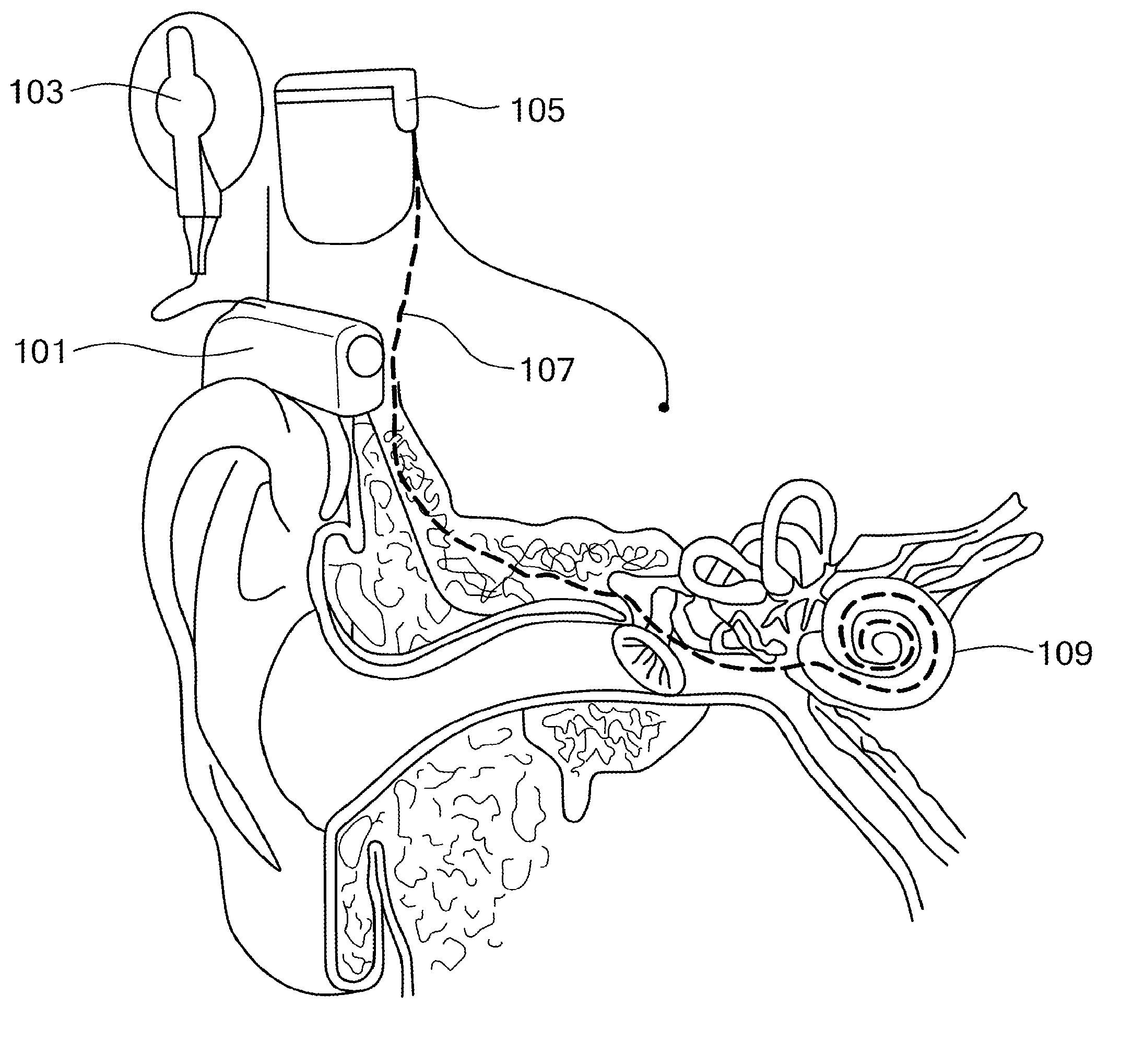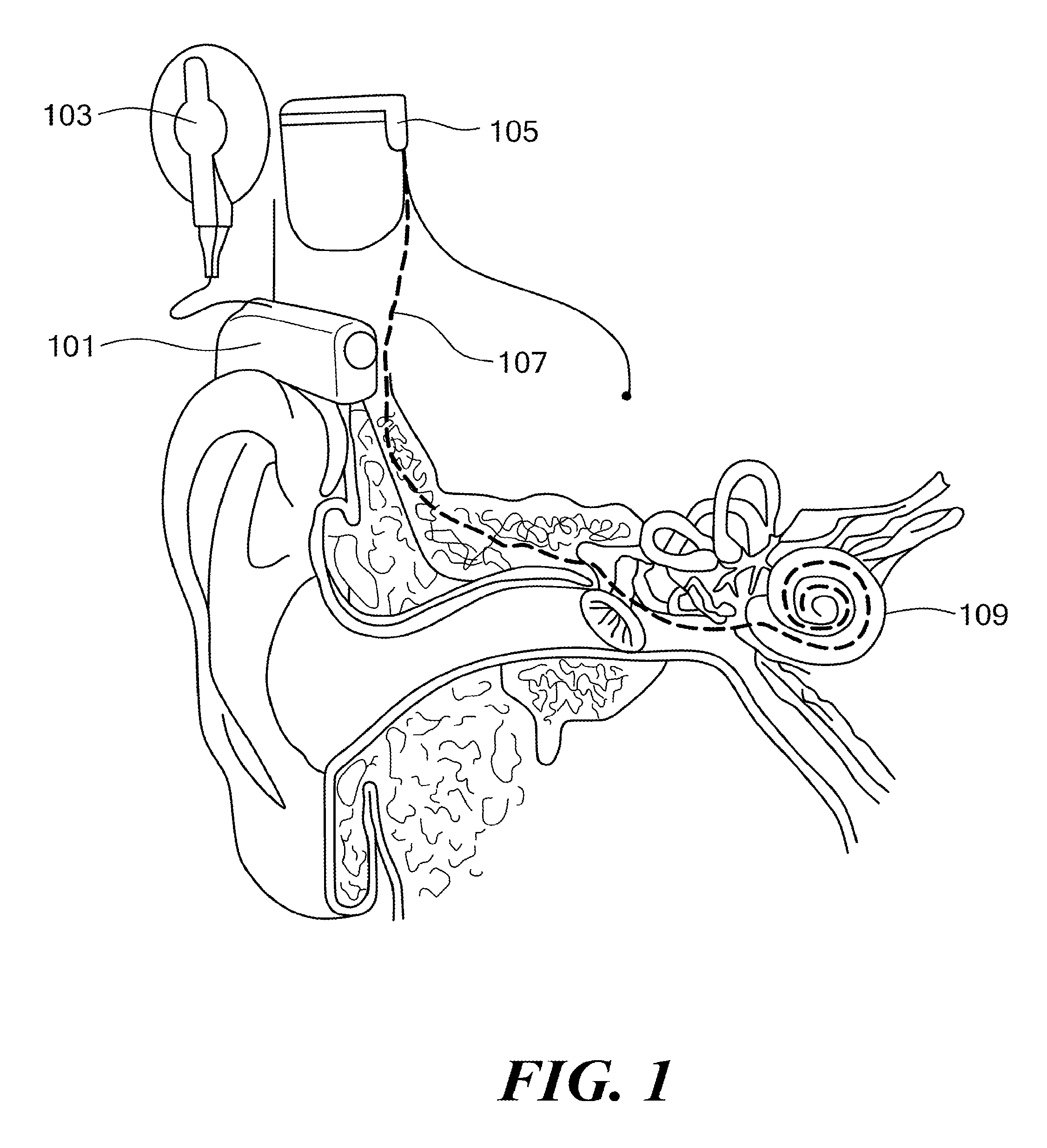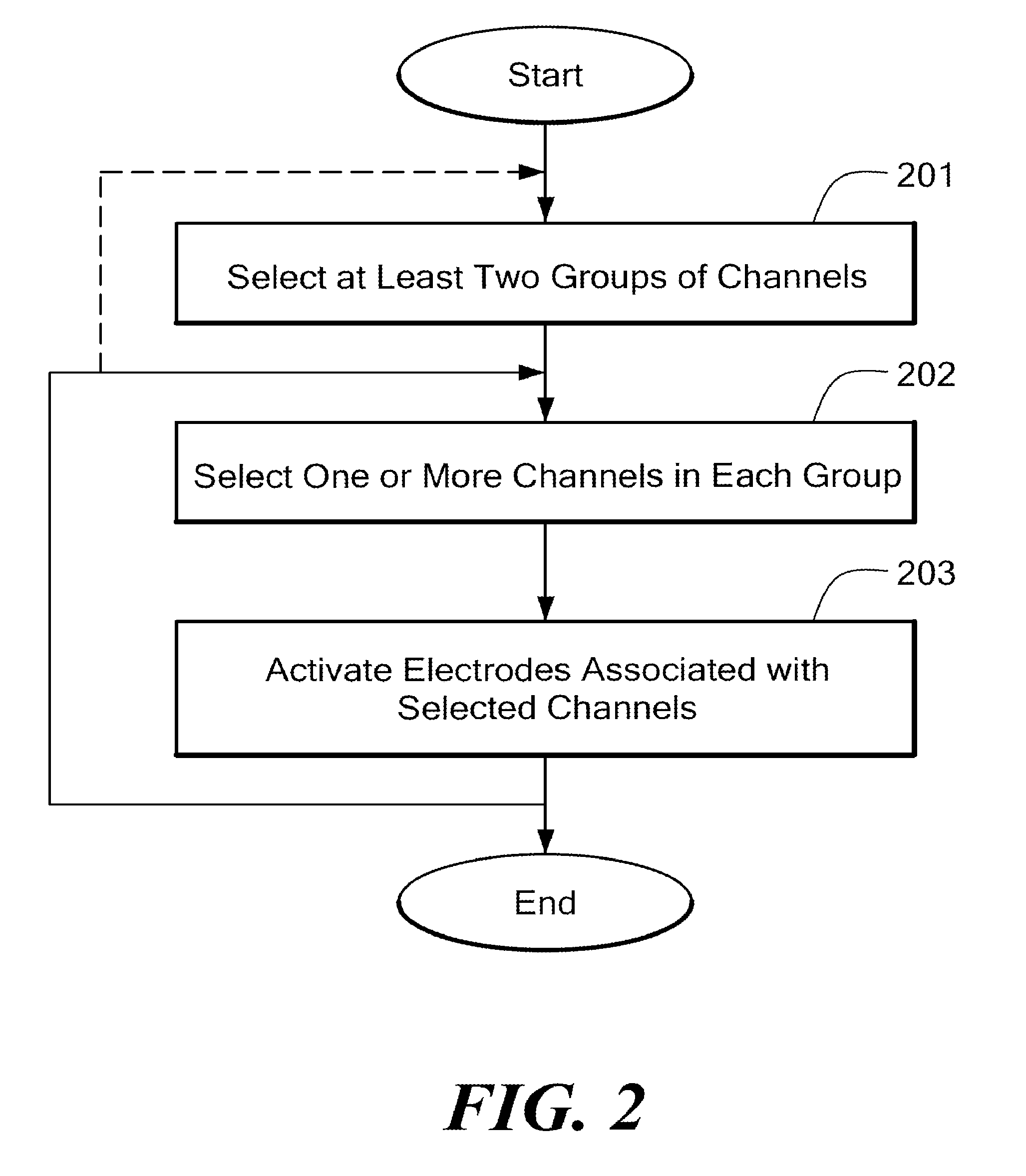Cochlear implant stimulation with variable number of electrodes
a technology of electrodes and cochlear implants, applied in the field of implant electrode stimulation, can solve the problems of spatial channel interaction, inability to choose the phase duration arbitrarily short, and the cochlear implant is not suitable for us
- Summary
- Abstract
- Description
- Claims
- Application Information
AI Technical Summary
Benefits of technology
Problems solved by technology
Method used
Image
Examples
example 1
Prior Art—“Conventional CIS”
[0031]In Example 1, selected groups in a conventional CIS system are shown in FIG. 3 (Prior Art). One CIS-stimulation cycle includes 12 selected groups 30. Each selected group 30 is composed of one channel. Since only one channel is present, it is the maximum itself (trivial case). Thus, this setting represents standard 12-channel CIS. The cycle repetition rate is R / 12.
example 2
Prior Art—“N-of-M”
[0032]In Example 2, one stimulation cycle using an N-of-M strategy contains only one selected group 40, which is composed of all 12 channels, as shown in FIG. 4 (Prior Art). The six channels with maximum energy are selected. Thus, this setting represents a conventional 6-of-12 setting. The cycle repetition rate is R / 6, which is an enhancement by a factor of 2 as compared to Example 1.
example 3
[0033]In Example 3, one stimulation cycle contains six selected groups 50, as shown in FIG. 5 in accordance with an embodiment of the invention. Each selected group comprises two channels, and the channel with the greatest amplitude is selected. The cycle repetition rate is R / 6 which is equal to example 2. However, an advantage over the N-of-M (example 2) is that permanent activity in all cochlear regions may be realized, comparable to standard CIS (Example 1). For example, in standard CIS, channels 1 and 2 are updated with a rate R / 12, respectively. Assuming considerable spatial channel interaction between neighboring channels, the “cochlear region” associated to channels 1 and 2 is thus updated on average by a rate of R / 6. In Example 3, one of the two channels 1 or 2 is selected, and thus the associated cochlear region is also updated with R / 6.
PUM
 Login to View More
Login to View More Abstract
Description
Claims
Application Information
 Login to View More
Login to View More - R&D
- Intellectual Property
- Life Sciences
- Materials
- Tech Scout
- Unparalleled Data Quality
- Higher Quality Content
- 60% Fewer Hallucinations
Browse by: Latest US Patents, China's latest patents, Technical Efficacy Thesaurus, Application Domain, Technology Topic, Popular Technical Reports.
© 2025 PatSnap. All rights reserved.Legal|Privacy policy|Modern Slavery Act Transparency Statement|Sitemap|About US| Contact US: help@patsnap.com



